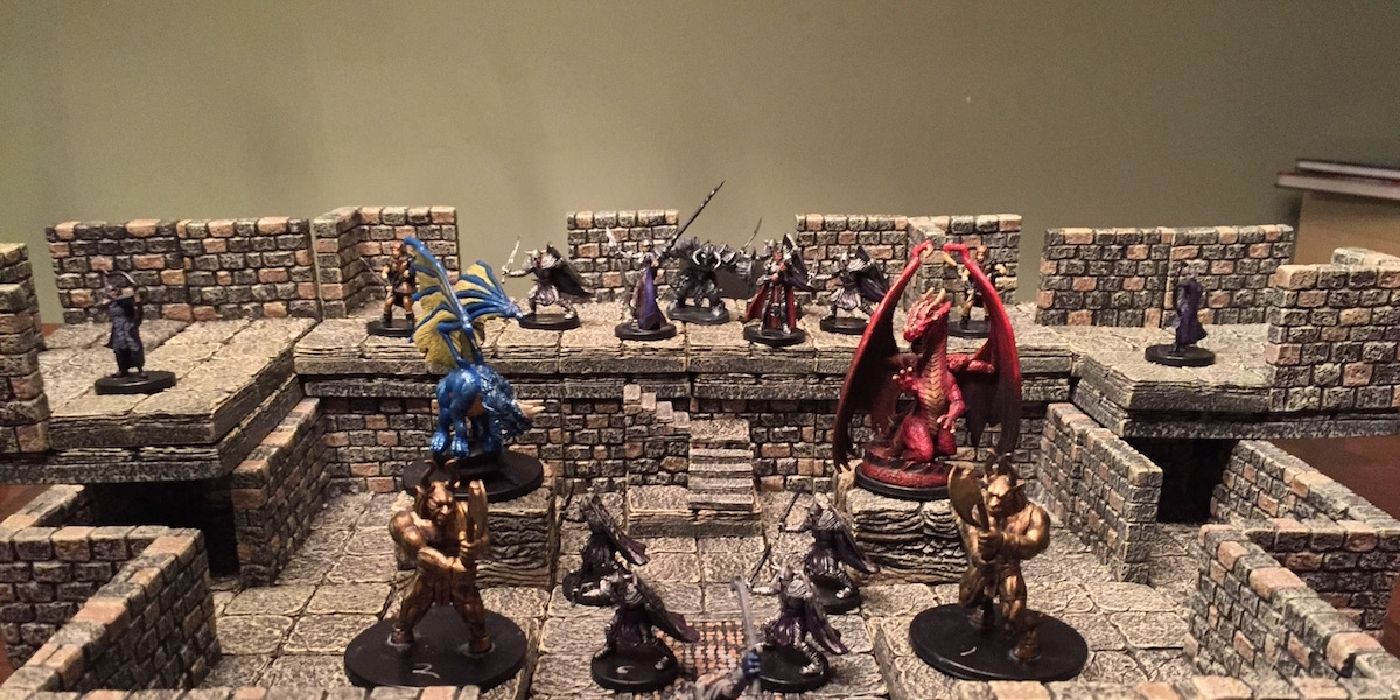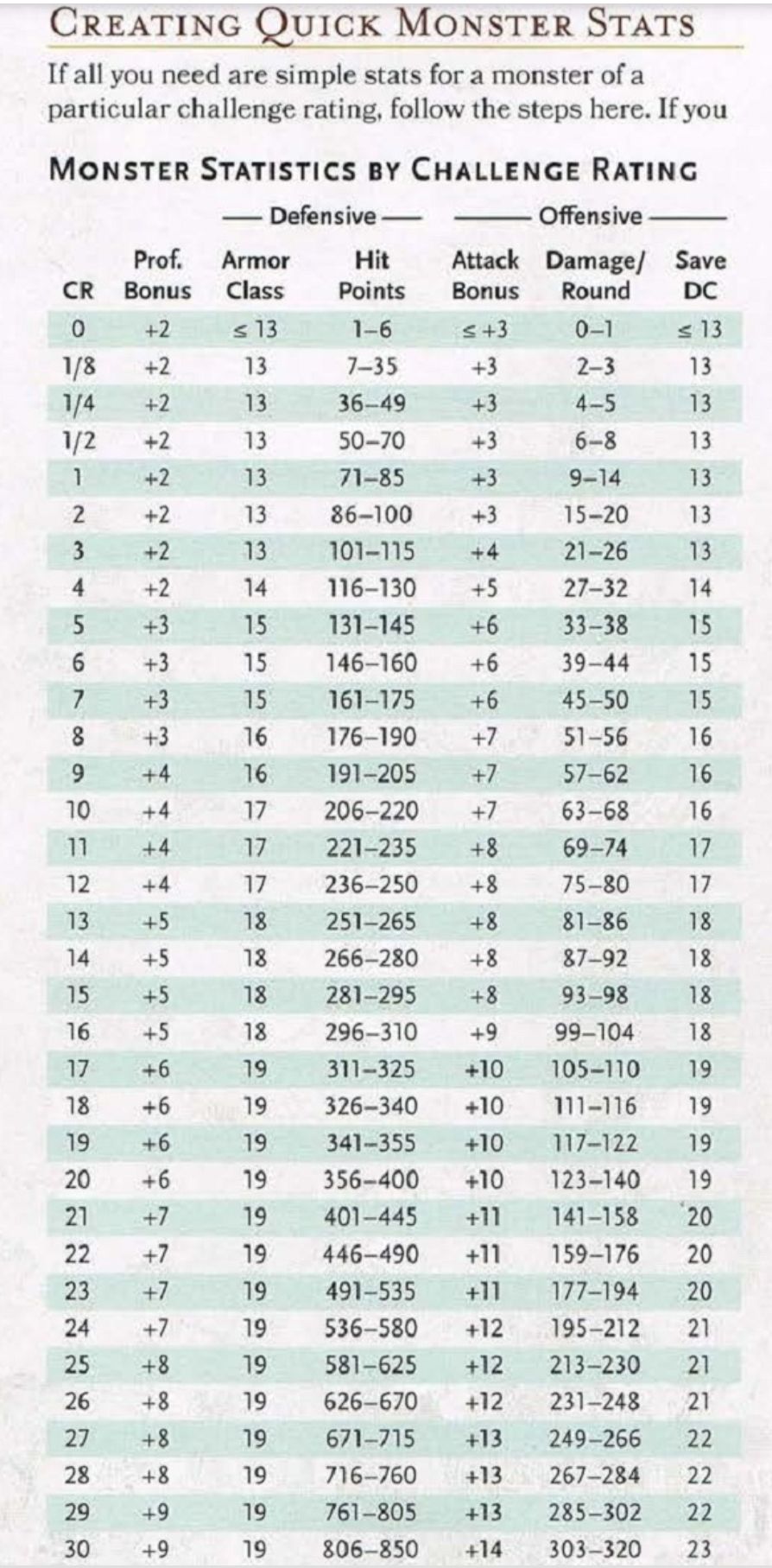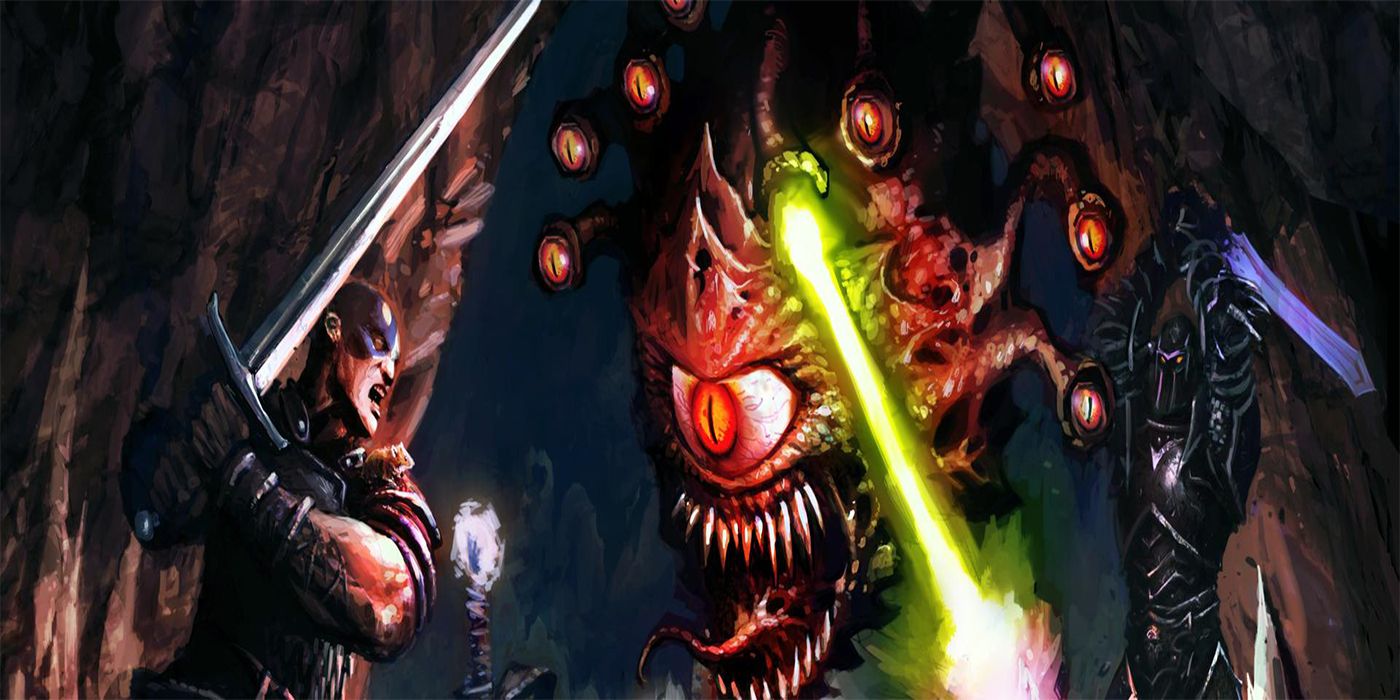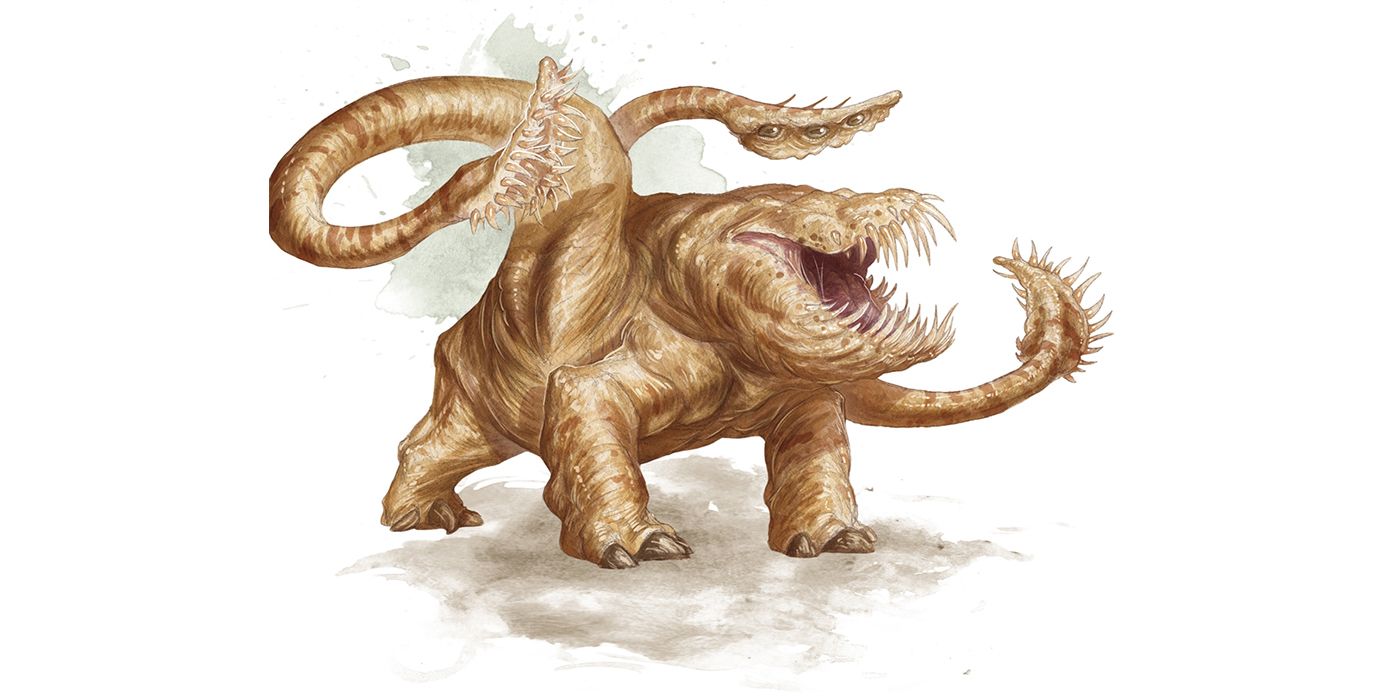Here's How Custom Monster Creation Works In Dungeons And Dragons 5e

Dungeons and Dragons 5e's Monster Manual is packed full of unique, diverse, and vicious monsters for dungeon masters to use against their players, ranging from dragons and giants to hungry treasure chests, but sometimes this range of options just isn't enough. Dungeon masters often find themselves wishing there were more options or something more specifically tailored to their campaign, and generally the only way to solve this conundrum is to create something from scratch. While reskinning monsters, the act of using the stat block of one creature but describing and naming it as something else, is perfectly okay, there isn't always a perfect match. That's why the Dungeon Master's Guide includes rules for creating custom monsters.
For those unaware, custom monster creation rules can be found starting on page 273 of the Dungeon Master's Guide, but the way they are presented is somewhat confusing. Everything a dungeon master needs to create custom monsters is there, but without spending a lot of time reading into everything and even doing some extrapolating of current monsters, odds are the write up in the book will not make much sense. Thankfully, dungeon masters can learn from the hard work of others, so here is a summarized version of how custom monster creation works in Dungeons and Dragons 5e.

The first step in creating a 5e homebrew monster for Dungeons and Dragons is to choose a target challenge rating. Challenge rating refers to the approximate strength of a monster, and how much of a challenge it will be for the players. A challenge rating of one indicates the monster should be relatively challenging for a party of four first level characters, meaning they will need to expend some resources in order to handle the beast, but should still come out on top. If a creature's challenge rating is above the party level, it will prove significantly difficult to defeat, and may require expenditure of all resources or even result in player death.
Although monsters are assigned one general challenge rating, they actually have two behind the scenes: an offensive challenge rating and a defensive challenge rating. Offensive challenge rating governs the monsters to hit bonus, its damage per round, and the difficulty class (DC) for any effects which require a saving throw. Conversely, a monster's defensive challenge rating governs its hit points, armor class, and resistances. The average of these two values determines the creature's actual challenge rating, so a creature of offensive challenge six and defensive challenge four would be challenge rating five, but its higher offensive challenge means it will be more deadly but easier to kill.

Determining a creature's offensive challenge rating begins with its damage per round. Find the target offensive challenge rating on the table and there should be a corresponding damage per round range, to hit value, and saving throw DC. The creature's damage per round sets its offensive challenge, and then its to hit value and save DC modify that rating. For every two points above or below the to hit value or save DC on the corresponding row of the table, the creature's offensive challenge rating increases or decreases by one respectively. For example, if a creature does 42 damage per round, its offensive challenge should be 6 and its to hit value and save DC should be +6 and 15 respectively. Offensive challenge is used to determine deadliness of a monster in Dungeons and Dragons games.
Determining a creature's defensive challenge rating is a similar process. The defensive challenge is set first by the creature's hit point total, and then modified by armor class value and any resistances it might have. Again, find the target defensive challenge rating on the table and there should be corresponding values for each of these statistics. After the creature's hit points are determined, its defensive challenge increases or decreases by one for every two points of armor class it has above or below the target. Resistances come into play somewhat differently, however.
In most cases, a creature's resistance will not affect its defensive challenge rating, this changes the outcome if the creature has numerous resistances of unique types like force, radiant, and so on. Monsters with high defensive challenge will be difficult to take down, and may require players to use resources or powerful magic D&D items.
Once all of these statistics have been determined, the creature's challenge rating can be finalized. It is recommended to work through monster creation with a target challenge rating in mind, manipulating the values to make sure that this target challenge rating is the end result, as once the dungeon master has the creature's challenge rating, its proficiency bonus and experience value are derived from this. This is mostly important for determining the creature's to offensive challenge rating, as proficiency bonus will modify the creature's to hit value. At this point, the next step is to fill in various values of the stat block to finalize the creature. It is helpful to look at existing Dungeons and Dragons monsters when working through this.

Given that hit points, armor class, damage per round, to hit value, and any potential save DCs have already been determined, the rest of the homebrew creature's statistics can be extrapolated. A creature's hit point value can be reverse engineered to determine its hit dice and constitution score, while its armor class will be based either entirely from natural armor or can be used to determine the creature's dexterity stat. Its damage per round informs the creator of how many attacks the creature should get and what the damage dice for those attacks should be, as well as the creature's strength stat. Lastly, the creature's to hit modifier can be used to determine its strength in conjunction with the proficiency bonus granted by its challenge rating.
Beyond this, creatures can have special abilities or spells which will modify its challenge rating, but that tends to make things far more complicated. The best way to handle those sorts of modifiers is to try and base it off of other creatures with similar powers when determining its challenge categories. This may require some deconstructing of existing monsters, but should do the trick. These rules for custom monster creation work for all things 5e and should allow dungeon masters to add a level of uniqueness and variety to their campaigns, and also serve to throw experienced players off their guard. Hopefully this rundown helps to sort through the somewhat confusing way the information is presented in the Dungeon Master's Guide.

Post a Comment